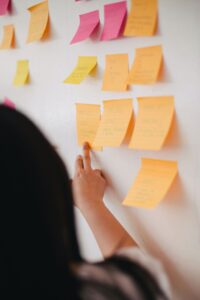- Identify methods for obtaining a random sample of the intended population of a study
- Identify types of sample bias
- Identify the differences between observational studies and experiments, and the treatment in an experiment
- Determine whether an experiment may have been influenced by confounding
Experiment Exploration: Inspiring Research Ideas for Dominica’s New Journey
Dominica just started a new job at a research company. She is tasked with coming up with an experiment. She is feeling some anxiety about what her experiment will be about. She asks her colleagues to send her some examples of experiments they have done in the past.

Dominica decides she wants to understand the effects of diet on the sleep quality of Olympic athletes. First, Dominica must decide which sampling methods she wishes to use to select which athletes will be part of her study. She isn’t sure how she wants to do this yet so she looks at the examples her colleagues sent her. Below are some sampling methods other researchers have used in the past:
- A farmer divides his orchard into [latex]50[/latex] subsections, randomly selects [latex]4[/latex], and samples all the trees within the [latex]4[/latex] subsections to approximate the yield of his orchard.
- To estimate the percentage of defects in a recent manufacturing batch, a quality-control manager at Intel selects every [latex]8[/latex]th chip that comes off the assembly line.
- To determine his internet connection speed, Shawn divides up the day into [latex]4[/latex] parts: morning, midday, evening, and late night. He then measures his internet connection speed at [latex]5[/latex] randomly selected times during each part of the day.
- In an effort to identify if an advertising campaign has been effective, a marketing firm conducts a nationwide poll by randomly selecting individuals from the population.
- A radio station asks its listeners to call in their opinion regarding the presidential election.
After deciding on her sampling method, it is important for Dominica to make sure there isn’t bias in her sampling. Bias can sneak into her study in numerous ways, skewing her results and leading to incorrect conclusions. Her colleagues have sent over a list of ways bias has occurred in their studies. Dominica uses this as a reference to make sure she does not make the same mistakes.